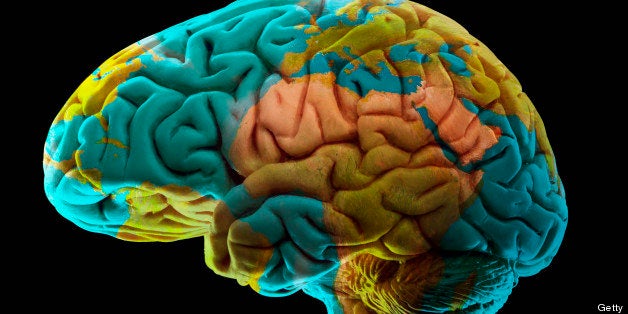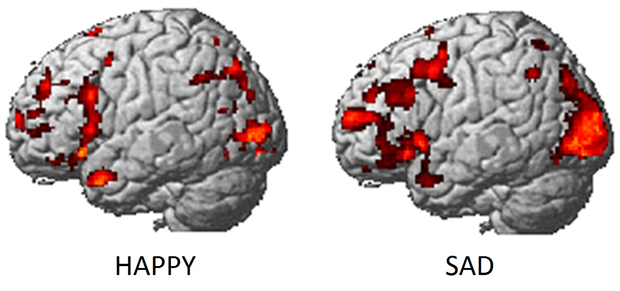
Emotional experience pervades every aspect of mental life. Emotions influence our memories and perceptions as well as our decisions and actions. When emotional processing gets out of whack, a number of problems result. Everyone agrees that emotion is important. Surprisingly though, researchers don't have a solid grasp of precisely what emotion IS. We don't know what processes give rise to emotion, we're not sure how different emotions relate to one another, and we don't know how emotion is represented in the brain.
But nascent technologies are rapidly expanding the ways we can address these questions. Recently, my colleagues and I at Carnegie Mellon University took advantage of these technologies in an attempt to gain new insight into emotion. We recruited professional actors and had them imagine being in different emotional states while we scanned their brains using fMRI. Why actors? We wanted to study a broad range of emotions, and actors are adept at rapidly entering and exiting emotional states on cue. Once we had those data, we used machine learning to identify the complex patterns of neural activity that underlie emotional experiences.
The results tell us a lot about emotion. Across individuals, we found consistent networks of brain activity representing each emotion -- John's anger and Mary's anger look a lot alike at the neural level. And by inspecting those networks of activity, we can gain insight into how the brain represents emotion. For example, we found that anger looks more similar to happiness than any other negative emotion. (This may be because anger is uniquely similar to positive emotions. Like joy and other positive emotions, anger can make you want to move towards whatever is making you feel that way, while most other negative emotions, like fear, tend to make you want to move away.) We also found that lust looked unlike any other emotion, represented by a unique pattern of neural activation unlike the others. Maybe we shouldn't even refer to lust as an emotion.
The data also revealed several interesting patterns within that neural activity. We discovered a network of brain areas that represent the valence of an emotion (distinguishing between positive emotions like pride and negative emotions like shame), another network that represents the energy or arousal level of emotions (distinguishing between high energy emotions like anger and low energy emotions like sadness), and a third that represents the social nature of emotions (distinguishing between emotions that typically involve specific other people like envy, and those that typically do not, like disgust). Beyond these relatively simple patterns, we observed a map of emotion that was extremely complex, befitting the countless years that philosophers and scientists have devoted to studying emotion.

One worry we had, in recruiting actors as participants, was that our results would say something about actors' emotions specifically rather than emotion more generally. In order to mitigate that concern, we showed our participants photographs in a second phase of the experiment. They weren't told this was going to happen, and hadn't seen the photos before. Some of the pictures contained relatively neutral content (e.g. scenes of bridges, lakes, and apartments), others were intended to invoke disgust (e.g. pictures of rotting food and dirty toilets). We found substantial similarity between the network of brain activity observed during self-induced, "acted" disgust trials and the network observed during the disgust picture viewing. The common pattern suggests that the neural activity we observed was not dependent on acting.
That we observed common patterns across two very different tasks (self-induced and externally generated emotion) also suggests a new method for measuring emotion. If the brain's representation of an emotional state is independent of its source, then we can use brain imaging to accurately measure emotional states. For any stimulus (e.g. a picture of a brand logo or a political candidate), our system provides an output corresponding to an individual's complex emotional response.
The marketing applications are apparent, but the most exciting applications are yet to come. As with any scientific endeavor, the progress represented by our study is incremental. We are indebted to researchers who have laid the groundwork for our experiment, and eagerly await others using similar techniques to further advance our understanding of emotion and its neural representation. With that understanding will come new insight -- information that could lead to new methods of diagnosing and treating those with emotional disturbances, as well as help all people lead more positive and emotionally balanced lives.